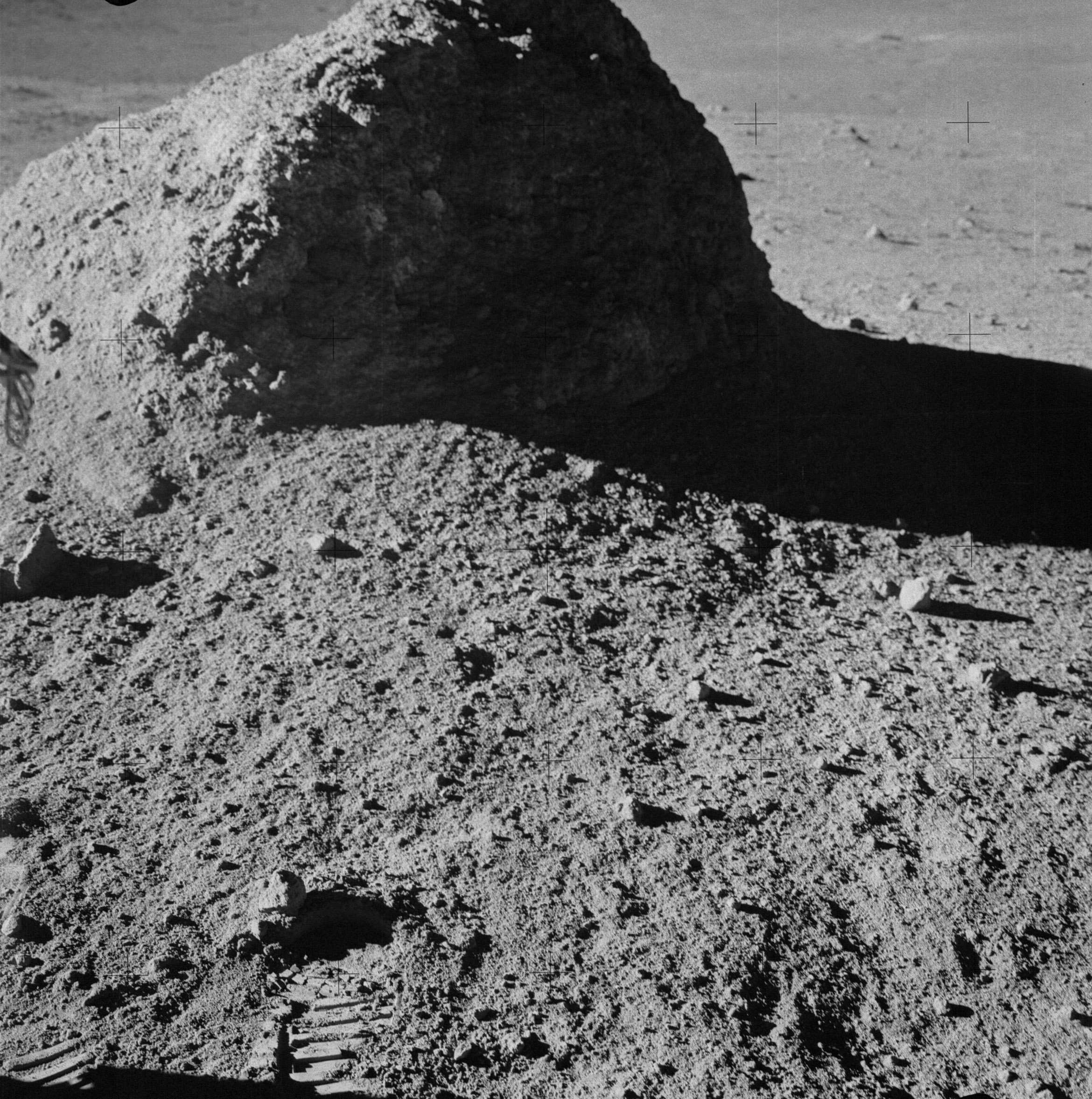Fillet (geology) on:
[Wikipedia]
[Google]
[Amazon]
In
 The fillet is characterized by an
The fillet is characterized by an


planetary geology
Planetary geology, alternatively known as astrogeology or exogeology, is a planetary science discipline concerned with the geology of celestial bodies such as planets and their moons, asteroids, comets, and meteorites. Although the geo- prefix t ...
the term fillet describes a fine-grained deposit in an apron
An apron is a garment worn over other clothing to cover the front of the body to protect from liquids. They have several purposes, most commonly as a functional accessory that protects clothes and skin from stains and marks. However, other typ ...
shape configuration that partially or entirely surround boulder
In geology, a boulder (or rarely bowlder) is a rock fragment with size greater than in diameter. Smaller pieces are called cobbles and pebbles. While a boulder may be small enough to move or roll manually, others are extremely massive. In ...
s on the surface of the Moon. Fillets are a morphological expression of lunar soil
Lunar regolith is the unconsolidated material found on the selenography, surface of the Moon and in the Lunar atmosphere, Moon's tenuous atmosphere. Sometimes referred to as Lunar soil, Lunar soil specifically refers to the component of regoli ...
development.
 The fillet is characterized by an
The fillet is characterized by an onlap
Onlap or ''overlap'' is the geological phenomenon of successively wedge-shaped younger rock strata extending progressively further across an erosion surface cut in older rocks. It is generally associated with a marine transgression. It is a more ge ...
contact with the adjacent rock and by a shallow or concave profile. Associated morphologies are thin pockets of dust present on top of the boulder and rock fragments either laying on top of, or buried by, the fillet. These rock fragments are chipped off from the original boulder by impacts of large meteoroids.
Origin
The preliminary scientific report of Apollo era indicate that two processes, not mutually excluding, can be responsible for the development of fillets: 1) Deposition of material eroded from the boulder itself by the abrasive action ofmicrometeoroid
A micrometeoroid is a tiny meteoroid: a small particle of rock in space, usually weighing less than a gram. A micrometeorite is such a particle that survives passage through Earth's atmosphere and reaches Earth's surface.
The term "micrometeoro ...
s, and 2) deposition of ejecta material from distant impact craters against the side of the boulder.

Visibility
Generally, fillets are smooth and, compared to rocks, are topographically subdued. Their reflectance (color and brightness) is similar to that of the nearby regolith (soil). As a consequence of these properties, the identification of fillets strongly depends on the geometric condition of illumination and observation, and fillet might not readily identifiable in images. The presence of a fillet adjacent to a rock can be nevertheless inferred using two locations around the rock: where the fillet casts its own shadow and on the side facing the Sun, where it appears brighter than the surrounding flat regolith. This identification of fillet can be shown using as example a 3D printed model of filleted rock illuminated at a grazing angle.
References
{{reflist Planetary geology Geology of the Moon